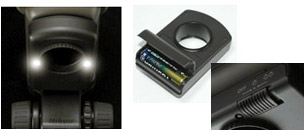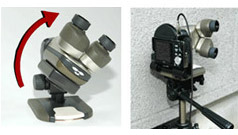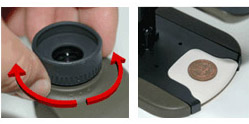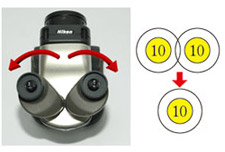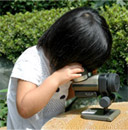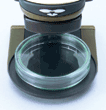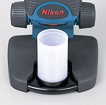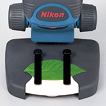
Illuminating your subject enables you to see it more clearly. The EZ-Micro features two high-intensity LEDs. Depending on the situation, you can turn the LED illumination off, use a single lamp, or use both. Dismount the illumination unit to insert one AA battery, then enjoy long hours of viewing.


